In Hindu mythology, Vishnu is a supreme god, accountable for the balance and protection of this world and the entire universe. The Anantashayana Vishnu, also known as Anantashayi Vishnu, is a form of Vishnu where he is reclining on the serpent, Anant (Shesha) amidst the cosmic ocean, with his consort Goddess Lakshmi seated at his feet. Generally, he is depicted with four hands holding his divine attributes, conch (shankha), discus (chakra), mace (gada), and lotus (padma). However, there are multiple instances like the Anantashayana relief of the Deogarh temple, where his hands are not visibly holding any attributes and merely resting around him.
Some of the earliest references to Anantashayana Vishnu are found in Hindu scriptures like the Rig Veda, Vishnudharmottara Purana, and Bhagavad Gita amongst others. According to Hindu mythology, during the cosmic night before the world's creation, Lord Vishnu was asleep on the serpent Ananta, floating on the ocean of milk (Kshirsagar). When it was the right time to create the world, his wife Lakshmi woke him gently by massaging his feet. Then, out of his navel emerged a lotus flower, and Brahma was born, the god who later created the world.
Symbolism is very intrinsic to the iconic image of Anantashayana Vishnu. It accounts for the time between the destruction and creation of the world. The serpent Ananta represents eternity. Vishnu’s four attributes conch (shankha), discus (chakra), mace (gada), and lotus (padma) symbolize the divine sound of creation, the cycle of time (cosmic order), mental and physical strength, and purity (enlightenment) respectively. While Vishnu's presence indicates divine sustenance and protection of the universe, Goddess Lakshmi at his feet signifies prosperity, abundance, and the inseparable bond between the divine couple.
Throughout history, the depiction of Anantashayana Vishnu has been a prevalent theme, spanning from ancient to medieval to folk and traditional art forms. This form has gone through several changes and experimentation by the artisans. However, the key essence of this iconic image remains standing today.
With reference to ancient Indian art, there are several temples, mandapas, and caves that house the illustration of Anantashayana Vishnu in mural, painting, relief, or sculptural form. A decent representation is found in Mahishasuramardini Mandapa at Mahabalipuram built during the Pallava's reign. Here, a gigantic figure of Vishnu is depicted gently reclining on the coiled serpent Anant. He is depicted with two hands: the left is raised at the elbow, and the right is resting on the body of the serpent. Carved in high relief, Goddess Lakshmi is portrayed at his feet sitting in Anjali Mudra (joined palms). Interestingly, his weapons are also shown in human forms called Ayudya-Purusha. Overall, the composition is simple and elegant; however, this iconography undergoes some modifications during the subsequent period.
Anantashayana Vishnu, Mahabalipuram, Pallava Dynasty
The depiction of Anantashayana Vishnu in Badami cave temple, Karnataka features a remarkable rock-cut sculpture of reclining Vishnu. However, he is represented with four arms, holding all his divine attributes. In a manner typical to South Indian depiction, here he is depicted with two consorts, Goddess Lakshmi and Bhudevi, who are portrayed standing by his side. Craftsmen of ancient times have done wonders with the expression of devotion and sublimity evident in the composition. The Kailasanatha temple, Ellora Cave 15 features another stunning representation of Vishnu. The elaborate carving of the composition, with the celestial beings surrounding the iconic form of reclining Vishnu against the cosmic ocean transcends time. The graceful proportion, divine features, and artistic sophistication portrayed by craftsmen of the Chandela dynasty while creating the Anantashayana Vishnu at the Khajuraho temple, in Madhya Pradesh is yet another noteworthy example of ancient Indian craftsmanship.
The depiction of Anantashayana Vishnu continued to be a prominent theme even during the medieval period, evidenced by the examples found in temples of Belur and Chennakesava. Hoysala sculptures are renowned for their intricate details and individuality. The Anantashayana form is depicted in different formats like relief and free-standing sculptures in the Hoysala temple. A beautiful wall panel in Chennakesava temple portrays an image of reclining Vishnu against waves of the ocean, adorned with his iconographic attributes in four hands and the seated Goddess Lakshmi at his feet. An interesting addition here is the long pedestal depicted under the coiled serpent.
Chennakesvara Temple, Hoysala Temple, Belur
The image of Anantashayana Vishnu is a popular and recurring motif in traditional paintings as well. Artists across various regions have used diverse styles and mediums to capture the beauty of this divine form. Tanjore, Pattachitra, Madhubani, and Miniature are some of the notable traditional styles of painting that frequently capture vivid interpretations of this form of Vishnu through their vibrant colors, styles, and patterns. These paintings serve various purposes but are mainly the objects of devotion and spiritual contemplation and are portrayed in temples, homes, or cultural places.
Tanjore or Thanjavur paintings portray Anantashayana Vishnu with their characteristic simplicity, vivid colors, glittering gold & silver foils, and inlay of glass beads or precious and semi-precious gems. Originally done on wooden planks, these paintings were later also made on walls, glass, paper, mica, and ivory, and were traditionally displayed on the walls of prayer halls. The figures are typically portrayed with round faces, almond-shaped eyes, and smooth streamlined bodies. The main subject is always in the center and larger than the rest of the characters. Flat bright colors are used with a hint of shading on the face to show the feeling of depth.
Anantashayana Vishnu Tanjore
Similarly, the Madhubani style of painting uses bold lines, rich patterns, vibrant colors, and deep symbolism to portray this form of Vishnu. Anantashayana Vishnu is a frequent theme in Madhubani paintings practiced in the Mithila region of India. Here, Vishnu is portrayed in a stylized manner, with an emphasis on capturing the essence of the deity's divine presence. This style of painting depicts the interconnectedness of people with nature and deities. As in other Madhubani compositions, no space is left empty and the gaps are filled with motifs such as animals, birds, and geometrical patterns. The double-lined contours filling the entire painting indicate the union of Rama and Sita or Vishnu and Lakshmi. The tapestry of Madhubani is imbued with deep symbolism from the color scheme of the figures to the geometrical patterns and motifs such as lotus, bamboo, fish, mango leaves or ponds are all examples of traditional depth and devotion.
In contrast to the bold and vivid Madhubani paintings, miniature paintings stand as an aristocratic and elegant art form practiced by Mughal and Rajput court painters. The portrayal of Anantashayana Vishnu can be seen in the miniatures of Rajasthan and Pahari regions. These miniatures have fine brushwork, vibrant pigments, and intricate details. Mostly, lord Vishnu is depicted wearing dhoti and elaborate pieces of jewelry consisting of necklaces, armlets, bracelets, and a crown (mukuta), each representing his royal and divine status. In addition, miniature paintings include elaborate backgrounds and borders reflecting the cultural and artistic context of the period in which it was created. Vishnu is depicted as a calm and benevolent deity with emphasis on different narratives ranging from his ornamentation and aesthetics to his role as preserver and protector of the world.
Vishnu on Ananta, the Endless Serpent. Pahari Region, Rajput Kingdom of Chamba. Gum tempera and gold on paper; page; c. 1700
The portrayal of Anantashayana Vishnu is also a recurring motif in some of the tribal artforms like Warli paintings. Warli, a tribal art form from Maharashtra is characterized by simple geometric shapes, monochromatic color schemes, and themes inspired by nature and mythology. In these paintings, Vishnu is depicted in a minimalist style, often surrounded by symbols representing the cosmos and the natural world. The details of facial features or intricate ornamentation are replaced with a focus on basic elements that convey his identity and role. Overall, his basic attire is represented with lines and shapes with little to no embellishments.
Warli
In summary, the portrayal of Anantashayana Vishnu emerges as a recurring motif across various artistic mediums in India. Prime instances of this can be observed in temple carvings, sculptures, wall paintings, and other forms of artwork, all of which underscore the lasting spiritual and cultural importance of Lord Vishnu in Hinduism. With its deep symbolism and captivating imagery, this iconic depiction remains a source of devotion, respect, and contemplation for both devotees and admirers of art alike.
- Kannadasan, S. 2021. "A Re-Reading on Cult of Lord Vishnu in ." International Journal of Mechanical Engineering.
- Lubotsky, Alexander. 1996. "The Iconography of the Viṣṇu Temple at Deogarh and the Viṣṇudharmottarapurāṇa." Ars Orientalis 65-80.
- MacDougall, Robert D. (Robert Duncan), 1940-1987. n.d. "Chennakesvara Temple." https://www.jstor.org/stable/community.3859285.
- Unknown. 17th century. "VISHNU RECLINING ON SHESHA IN THE COSMIC OCEAN: A FOLIO FROM A MARKANDEYA PURANA SERIES." The Cleveland Museum of Art . Oscar Leneman Collection.
- Hallman,Ralph J. 1954. "The Art Object in Hindu Aesthetics." The Journal of Aesthetics and Art Criticism 493-98. https://www.jstor.org/stable/426909
- Goswamy, B.N. 1992. " Pahari Masters: Court Painters of Northern India." Artibus Asiae. Supplementum. https://www.jstor.org/stable/1522698
- Smith, Walter. 1996. " The Viṣṇu Image in the Shore Temple at Māmallapuram." Artibus Asiae 19-32. https://www.jstor.org/stable/3250103
- Pandya, Nalinaksh A. 1994 " AN IMAGE OF SHESHASHAYI VISHNU-FROM VADTHAL, GUJARAT (SUMMARY)" . Proceedings of the Indian History Congress 1956-57 https://www.jstor.org/stable/44143488


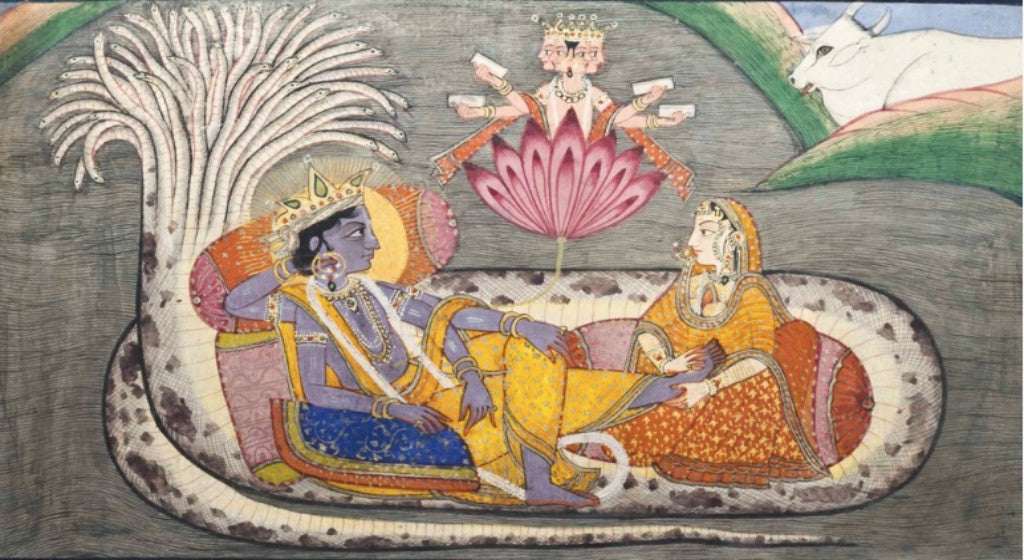















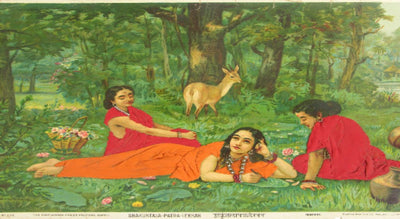
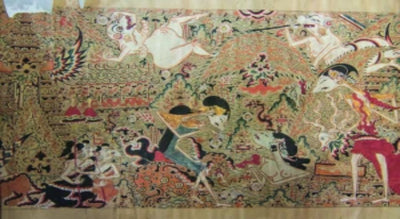
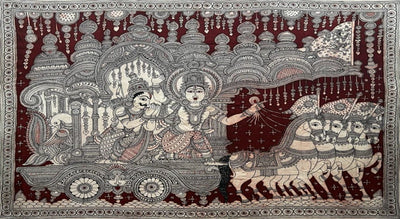

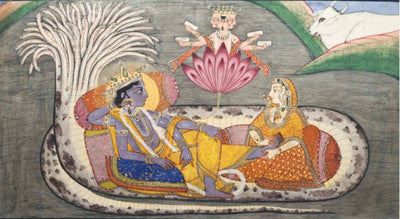
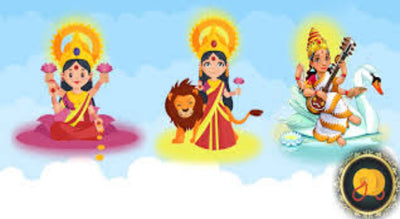
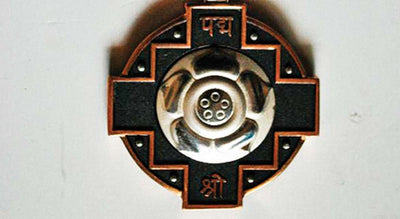

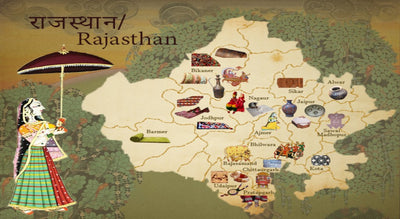
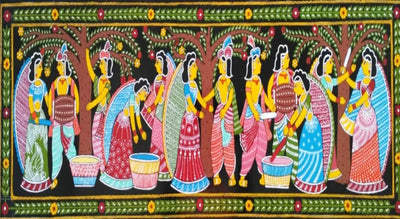
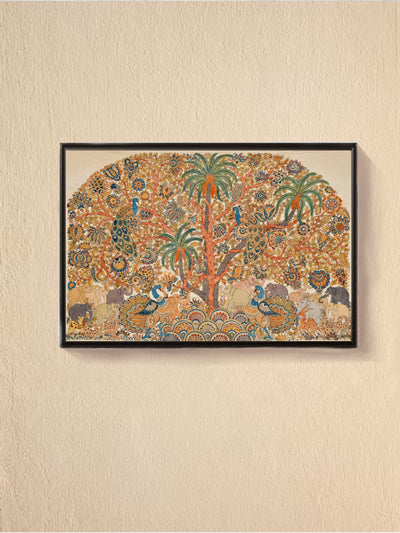







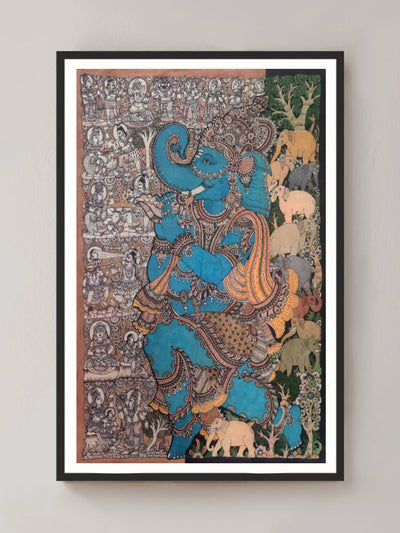








0 comments